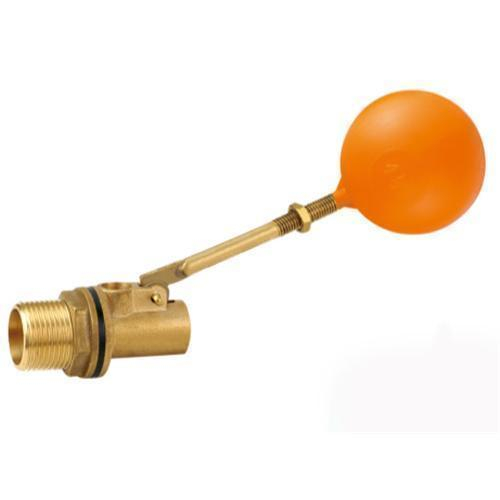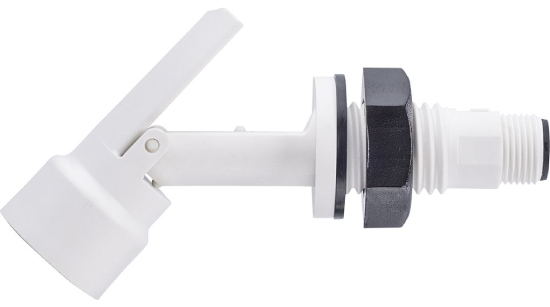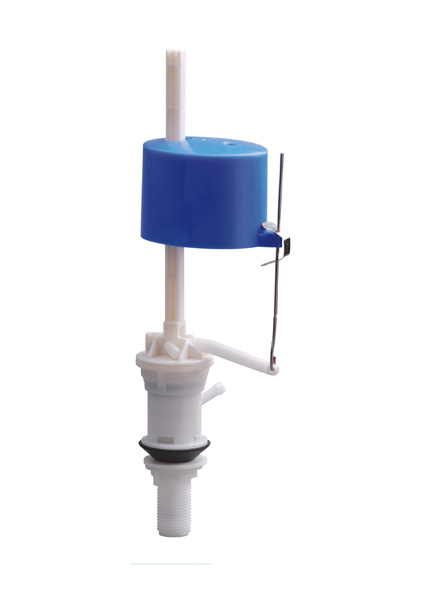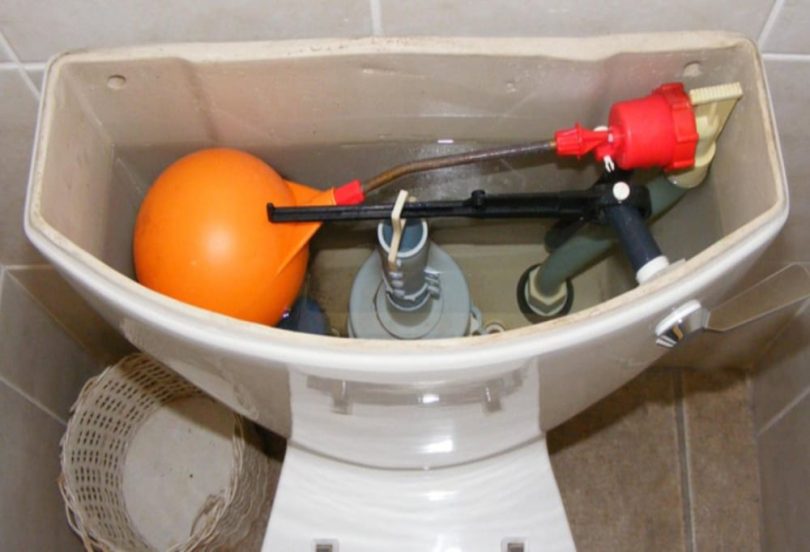Water filling is controlled by the ball in the toilet. Often referred to as the float, it is both simple and effective. The float is attached to a metal rod that connects to the toilet fill valve.
The toilet ball is no longer used on newer toilets, but there are still toilets that already have these installed to regulate the water level in the toilet.
Table of Contents
How to Adjust a Toilet Float Ball?
Step 1: Take the lid off
Lift the lid off of the tank and set it aside
Step 2: Check the water level inside the tank
Under the overflow tube and fill valve, the ideal water level is 1 to 2 inches. A water level that is above or below this will create an imbalance.
Some tanks have a line etched in to show the right level. The water level must be aligned with the line indicated.
Step 3: Disconnect the water supply
You should first empty your toilet tank before you begin any adjustments. Stop the water supply before making any adjustments. Find the flush lever near the wall, or find the external valve.
Depending on the model, you may need to press a button or turn the knob clockwise to flush to remove water in the tank.
Step 4: Check the fill valve and float
Check the toilet tank float, fill valve, and float height. The toilet tank float is part of a ball-and-arm system. The height of the float determines how much water will be retained in the tank.
Do not place it too high or too low. Check whether there is water inside the float by shaking it; if there is, you need to replace it.
Step 5: You can adjust the float height using a screwdriver
There is often a screw above the fill valve. Whether you turn clockwise or counter-clockwise, the float will either lower or increase in height.
Don’t rotate any more than one full rotation, as this can trigger inconsistent flushing.
Step 6. Flush the toilet to confirm the process
Turn on the water supply after you have finished adjusting, and allow it to fill for one to two minutes. Now flush it and take note of the water level in the tank.
If you have too much or too little water, you will have to repeat the process.
How to Adjust a Float Cup?
Start by removing the lid and disconnecting the water supply. After opening the lid you will find an adjustment screw made of plastic alongside the floating body.
You just need to turn this screw to adjust the float cup. You can use a normal screwdriver. Remember, a clockwise turn lowers the water level and an anticlockwise turn raises the water level.
Your model may not have screws. In this case, there should be a release clip at the fill valve shank. Move this clip up to raise and down to lower the water level.
How to Adjust an Internal Float?
Open the lid and you will find a clip that holds the refill tube and overflow tube together. Unclip it first. Now you need to unlock the float by turning it ? counterclockwise.
Move the float up to raise and down to lower the water level. Now lock the float by reversing the process (? clockwise turn). Finally, clip the overflow tube and refill the tube.
How to Troubleshoot Toilet Ball Floats?
The tank is not completely filled
The tank does not completely fill, let’s say. Float rods for ball floats are bent upward, so they point upward. Check the water level in between each adjustment. Make the adjustment in small increments.
You can slide the integrated float mechanism upwards on the center tube after loosening the clamps that hold it to the flow system.
Replacing floats
Ball floats are screwed onto the ends of float rods, so turn the old one counter-clockwise to remove it and then turn the new one clockwise to attach.
It is possible to rebuild tanks with integral floats, but it is more convenient to simply replace the whole flow control unit since it is fairly inexpensive and readily available at hardware stores.
Leaking ball floats
The metal ball floats with two metal hemispheres soldered together are prone to develop leaks.
Having water in the floats weakens their buoyancy and prevents them from rising to the top of the tank in order to open the fill valve. This can be resolved by replacing the ball float.
Water flows after the tank is full
In the event that the float is not high enough to stop the water valve from opening, bend the float rod down towards the bottom of the tank to correct this issue. Toilet tanks have an inlet valve and float.
In small increments, lift the tank top to reach the proper level and bend the rod down. Adjusting the integrated floats involves loosening the clamps on the filling mechanism and sliding the float assembly down.
3 Different Types of Toilet Floats
1. Float ball
 This is a type of float that looks like a small ball. The float ball is connected to the toilet fill valve via a metal rod.
This is a type of float that looks like a small ball. The float ball is connected to the toilet fill valve via a metal rod.
If you notice the water in the toilet has dropped, you can easily adjust the ball.
2. Internal float

This variety is like the float cup type and a little more advanced than the cylinder float.
The internal float sets the water level more accurately and is found in newer toilets. It goes from the fill valve down to the bottom to the flush valve.
3. Float cup

The float is in the form of a cup. Floats are vertical pipes situated next to toilet fill valves. Floating cups rest on the water’s surface to determine the height. The higher the float goes, the water level rises.
It works the same as the other way and lowering the float reduces the water level.
Why You Need to Adjust the Toilet Float Ball
Ghost Flushing
Unless you have ghosts in your home, if you have a toilet flushing on its own, it often means you have water escaping from the tank.
When it empties, there is a trigger for the toilet fill valve. You can adjust the float valve if you have a damaged valve or elongated refill tube.
Partial Flushes
If your toilet only flushes half as well as it should, you may need to adjust the chain, or the flapper valve may have worn out or become clogged.
If you flush the toilet and the water runs continuously, there may be a broken flapper or a loose chain.
Waste of water
When you have a toilet that is not function ing properly, you are going to deal with toilets continually running or toilet flushes that run longer than average; leading to water wastage.
Probable clogging
Solid waste is flushed with exactly the right amount of water by your toilet system. However, the water level is also not set correctly unless the float is set properly.
As a result, there is insufficient pressure to properly flush feces that leads to the toilet overflowing.
Fix flushing issues
Common toilet flushing issues can occur, such as a weak or incomplete flush, leading to build-ups. Flushes might only be half complete, or water runs after flushing.
When to Adjust Your Toilet Float Ball?
Toilet tank taking too long to refill
It could mean a faulty fill valve that’s clogged with mineral deposits if your toilet tank fills slowly. The fill valve might need to be replaced, or mineral deposits might need to be removed.
Weak flushing toilet
Having a toilet that doesn’t flush well is very irritating. It is not a pleasant experience to flush a toilet twice.
The most common reason for this is not having sufficient water in the tank.
When you have a running toilet
Running toilets can be very costly. Your money goes down the drain with every minute that passes.
A wrongly set float is not always responsible for running toilets but they are in most cases.
There is not enough water in the bowl
A certain amount of water must remain at the bottom of your toilet bowl. If the level of water is lower than what the waterline is, the valve is not filling with the right amount of water and the float needs to be adjusted.
FAQs
Q. 1: How long does it take to reposition a float?
Ans. Once you learn how to do it, It’s easy and doesn’t take more than ten minutes.
Q. 2: What happens when a toilet float isn’t high enough?
Ans. A float controls the water level of the toilet tank. If the float is too low, the flush is weak. If it’s too high, the water spills, preventing the fill valve from closing fully. The toilet will just keep running.
Q. 3: Why is your toilet float ball not working?
Ans. If your toilet has a low water level, then the ball float arm will not work properly. A sticky ball float can also be a problem and cause it to not work.








Leave a Comment